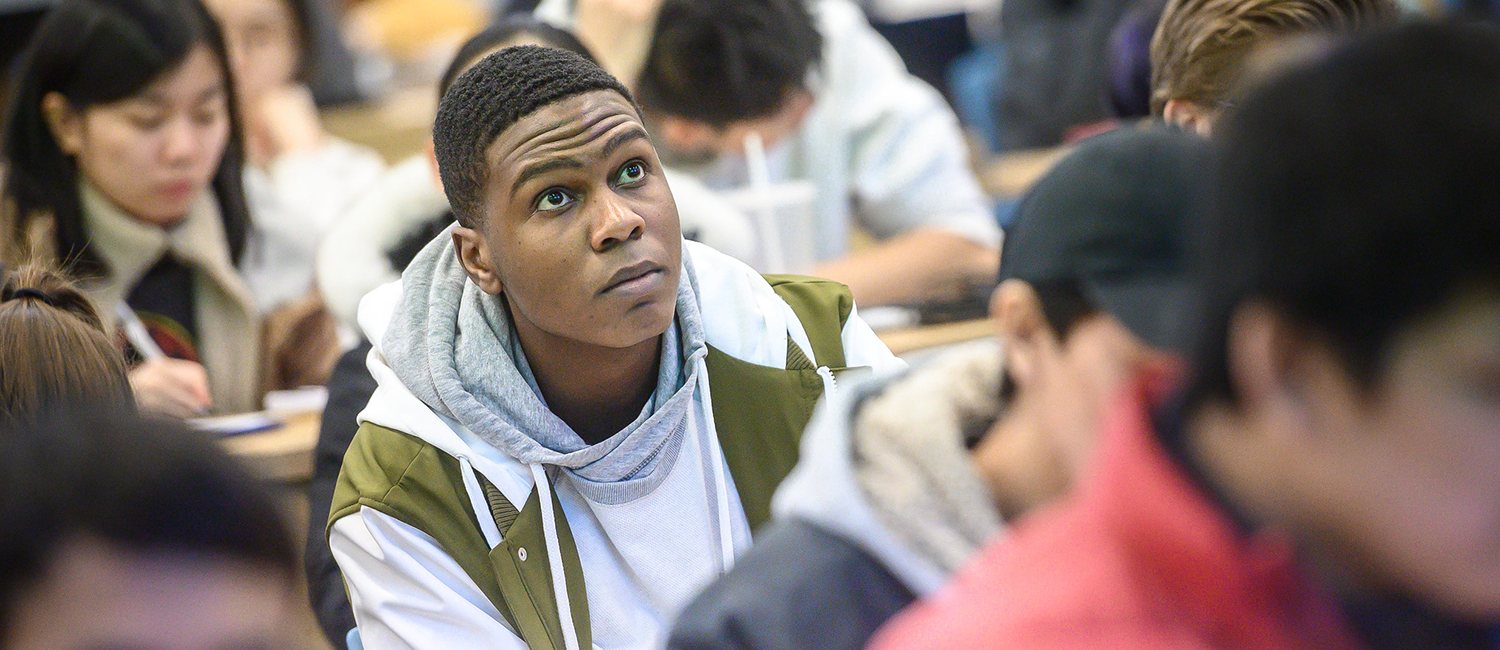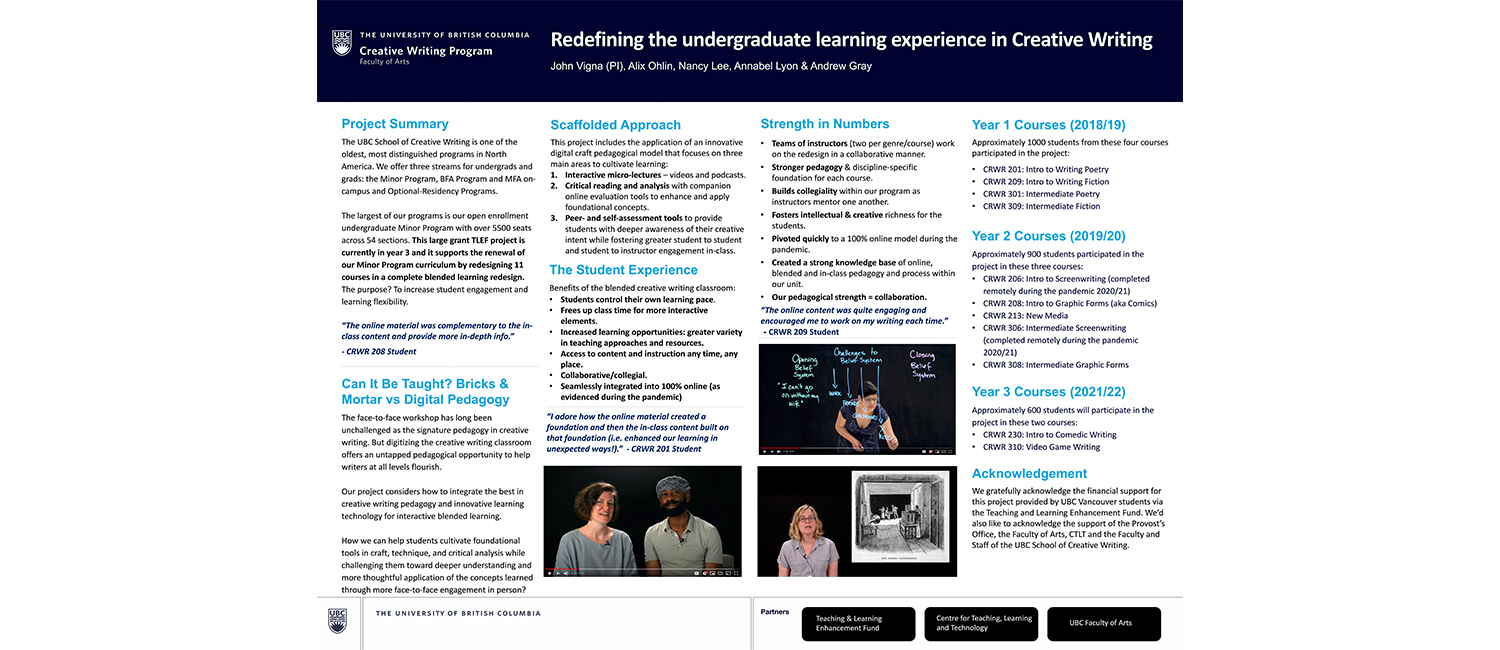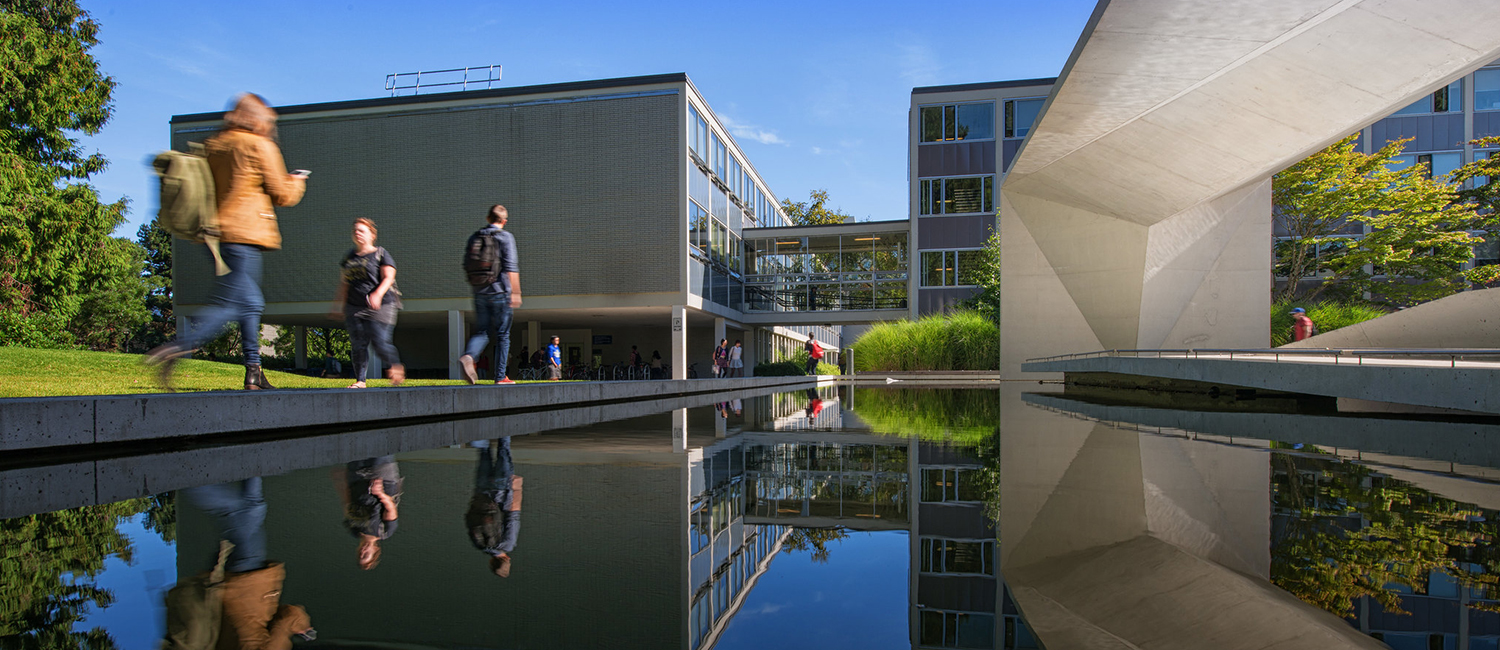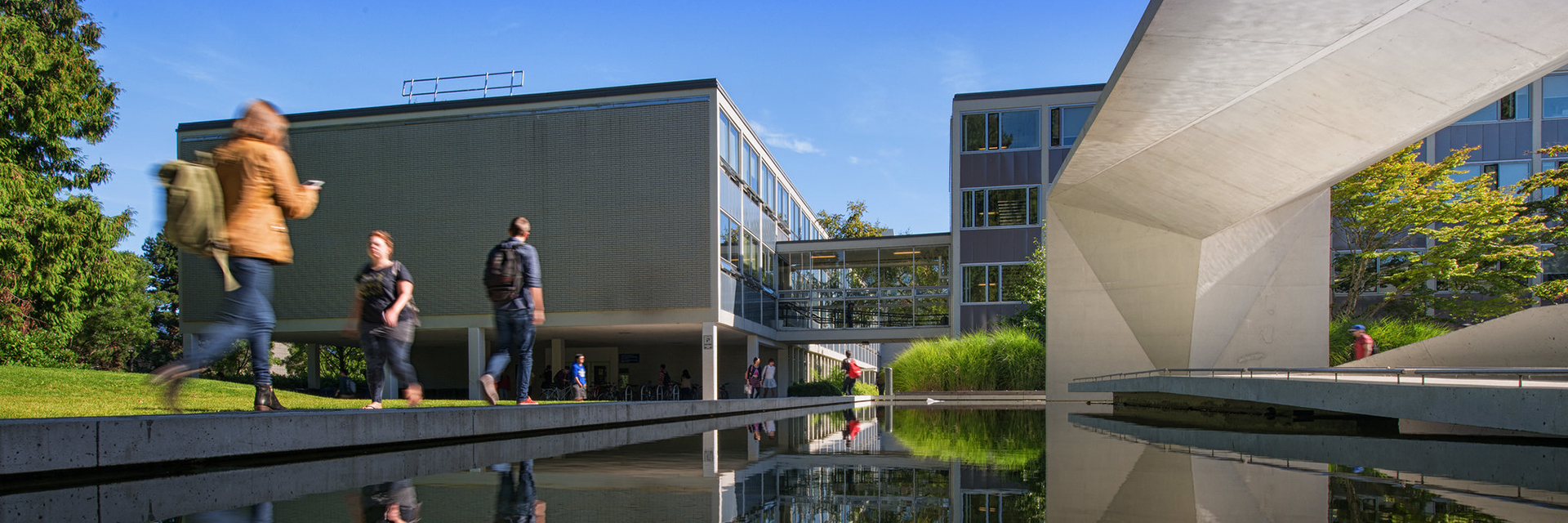The Teaching and Learning Enhancement Fund (TLEF) supports UBC’s Strategic Plan Shaping UBC’s Next Century, by advancing transformative learning at the university. TLEF projects can be small or large in scope, from creating innovative resources for a single course, to redefining the learning experience for an entire department. UBC’s School of Creative Writing instructors attempted the latter option, and strengthened their cohesion in the process.
Moving on from in-person instruction only
Before the start of the project, Sara Graefe, lecturer in Playwriting and Screenwriting in the School of Creative Writing, was teaching a three-hour course every Friday afternoon in a large lecture hall. “I would usually have a lecture on a topic, then we would often screen short films in class, do some writing exercises, then a bit more lecture,” she remembers. However, Sara admits that the time and format of her course did not resonate well. “Students hated the three hours at the end of a long week; I hated the three hours. It was really a challenge to keep students engaged.”

Moving from an in-person to a hybrid environment was beneficial for students and instructors
Sheryda Warrener, lecturer in Poetry in the School of Creative Writing, found herself in a similar position. For one of her courses, she used to teach twice a week in a lecture hall. “We would have a slideshow during the lecture. Sometimes we would do some writing prompts or other activities, but that was it.” Beyond the delivery method, it was the course dynamic in relation to her topic that Sheryda found challenging. “Some students would go all semester without speaking to anyone else in the class. It felt a little antithetical to what poetry is, which is forging connections with people and expressing yourself. I feel like the lecture is quite passive as a form, and that it didn’t really fit my content – or the discipline – at all.”
Fortunately, in 2018 the School of Creative Writing received a three-year Large TLEF Transformation grant to support the renewal of its Minor Program curriculum by redesigning 11 courses to each consist of a completely hybrid learning format. The purpose of the project was to increase student engagement and learning flexibility.
Project PI, John Vigna, assistant professor of teaching, and his team, wanted to explore the effects of hybrid learning, synonymous to blended learning, in the School’s Minor Program’s large lecture classes. Hybrid learning is a delivery format where learning activities are a mixture of on-campus/in-person and online activities, where the online portion of the course contribute to a significant fraction of the total credit determined by instructors. The School of Creative Writing decided to adopt a model that use both models evenly, and designed courses that make the best of both formats to support student learning.

The School of Creative Writing’s project was available as part of the TLEF Showcase at 2022 Celebrate Learning Week
“I was very new to this idea of hybrid learning,” Sheryda remembers. “I was interested in learning more about what was possible.” Her poetry courses were part of what was included for redesign in the first year of the TLEF project, and she soon realized that this approach made learning every concept better. “For example, with the concept of ‘image’, we filmed a conversation where we share a few of our favourites with one another and describe why the images are so compelling. Then we invite students to bring their favourites to the in-class session to share in small groups.” As a result, students come to class much more prepared and engaged. “It’s a great foundation that moves the conversation forward about what a poetic image is, how it works in the organization of a poem, and how it makes us feel,” she explains.
Involved in the second year of the TLEF project, Sara’s “Introduction to Writing for the Screen” course redesign was completed remotely during the shift to online learning caused by the pandemic. “We took what was delivered exclusively in lecture halls and made them hybrid so that 50 per cent of the content would be delivered online and 50 per cent in-person.”
When designing the online portion of her courses, she could feel the pressure of designing educational videos for her students. “In a screenwriting course, we are teaching students how to become visual storytellers,” she describes. “We had to not just talk the talk, but also walk the walk in our videos. We couldn’t just shoot talking heads in our videos. We needed to find ways to juxtapose talking heads with visuals, in the same way we are teaching our students to balance images with dialogue in their script.”
A short example of one of Sara’s courses
Thanks to their teamwork, the hybrid model of teaching allowed Sara to share teaching materials that modelled key visual storytelling techniques while preparing students for their in-class time. “We can study the theory and work on writing exercises ahead of time so that, by the time students come to class, they are ready to just jump in.”
Benefitting students and instructors alike
A reservation one could have about using a hybrid format of teaching is the idea that it might lead to lesser engagement and attendance, especially for the in-person portion. However, as both Sara and Sheryda explain, moving to the hybrid delivery method has only brought positives for them and their students.
Regarding attendance, Sara was pleasantly surprised by her students’ reactions to the switch to hybrid. “It’s funny, because I’m still teaching in the same time slot on Friday afternoons, but now it’s only for an hour-and-a-half. Students became so engaged with the course, thanks to the online pre-work and engagement each week, and the attendance didn’t drop off. People kept coming; they wanted to be there and were ready to learn. The quality of their writing was better than we had ever seen.”
Sheryda noticed better engagement as well, and found another positive outcome for students. “In general, hybrid learning gives students the flexibility to study at their own pace. It also gives them foundational concepts that we can build on during active engagement in the classroom.”
Finding strength in numbers
A key to implementing this hybrid model, the first of its kind in creative writing pedagogy, was a collaborative approach. To develop the TLEF project, instructors from the School of Creative Writing worked in teams of two or three to redesign their courses together. Using a discipline-specific foundation for each course and building collegiality in their programs, they created a strong knowledge base of online, blended and in-class pedagogy and process. More importantly, it created a close relationship between team members and across disciplines.
“Course design can be a difficult, solitary activity,” John says. “We have many years of teaching and writing experience in our School so we wanted to tap into that deep knowledge and experience by having instructors work together in designing these new courses. Our belief is that a collaborative approach reflects a more diverse, rigorous pedagogy that offers multiple perspectives to the students in both teaching practices and discipline-specific approaches.”

The School of Creative Writing created the first hybrid model in creative writing pedagogy
Sara explains: “I worked with an associate professor in Screenwriting, and a sessional instructor in Screenwriting and Writing for Television. We were already collegial before starting this project, but it brought us closer together as a team, which was fantastic.” Sara and her colleagues met weekly over Zoom during the pandemic, and one of them even built a recording studio in their basement to keep working when filming on campus was not possible. “We were discussing the TLEF project, but those check-ins grew into something bigger. We became a pandemic support group for one another.”
Sheryda, who collaborated with Ian Williams, former UBC assistant professor, appreciated teaming up with a colleague to develop her poetry courses. “For the time, I got to work with someone and talk through what was possible for our students. When you’re designing a course, you’re often on your own, which is challenging. It becomes much easier when you can work with someone from your discipline.”
This collaborative mindset pushed her to do things she had never tried before. “We ended up doing a podcast, which was really fun,” she explains. “We would meet and just talk about a poem we were going to use with students. We didn’t write scripts for it; we just started asking each other questions and would record it.”
The project has had a ripple effect that expanded across the School of Creative Writing. Because they used collaboration as their collective strength, the instructors created an environment where they mentor and lift each other up.
“The collaborative field unified us in a way that didn’t exist before, and that grew out of the TLEF project,” Sara explains. “This awareness of working together can create amazing results. I think the people teaching in the BA Minor Program are happier in the classroom now that we are using a hybrid format.”
“The way we talk about teaching is so much more visible now; it’s much more transparent,” confirms Sheryda. “Just knowing that our students are learning in a similar way now brings a sense of cohesiveness among faculty in the undergraduate program.”
In Sara’s mind, the TLEF grant the School received was pivotal to the project. “I don’t think we could have done it without funding and a multi-year commitment from the TLEF. It gave us the support and momentum we needed to transform courses across our entire BA Minor Program.”
As Director of the School of Creative Writing, Alix Ohlin witnessed the project take shape. Her words summarize this three-year adventure. “The Creative Writing TLEF project enabled us to build rich and innovative courses that engage students across multiple modalities. Because multiple faculty members across our unit worked on the project, often in teams, the courses feel very connected to one another, and the project fostered important conversations about creative writing pedagogy. This experience with hybrid courses was also essential to our successful teaching during the pandemic. Overall, this project has led to deeper, more multi-faceted student learning and a stronger undergraduate curriculum.”
The next round of applications for Large TLEF Special Call: Hybrid and Multi-access course redesign projects will be the opportunity for instructors wanting to enhance their teaching through innovative projects, like the School of Creative Writing accomplished. “I definitely encourage people to apply,” Sara concludes. “As instructors, we want to dream big about enhancing student learning, and the TLEF is a way to do that.”
